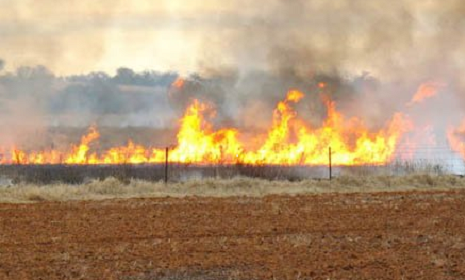A group of researchers concludes, there had been no increase in the levels of methane emissions in India between 2010 and 2015. This is the first time an independent assessment of India’s methane emissions has been carried out by a team of scientists from UK, Japan, Germany, Australia, besides India.
New Delhi (ISW) – A group of researchers have concluded, there had been no increase in the levels of methane emissions in India between 2010 and 2015.
This is the first time an independent assessment of India’s methane emissions has been carried out by a team of scientists from UK, Japan, Germany, Australia, besides India.
The study used a combination of satellite, aircraft and surface observations to find out the actual amount of methane emissions from India between 2010 and 2015. The average emissions over the period were found to be similar to what India has officially reported to the United Nations Framework Convention on Climate Change. Ruminants or cud-chewing animals (such as cows, buffaloes), waste and fossil fuels were found to contribute equally to India’s methane emissions.
“India is currently thought to have the second largest CH4 emissions of any country, but emissions have not been quantified from the top-down using atmospheric observations from within the country and a high-resolution modeling approach. We used a combination of satellite, aircraft and surface observations between 2010 and 2015 to quantify CH4 emissions from India and to investigate sources of discrepancies between the top-down derived emissions and two inventories, EDGAR2010 (Emissions Database for Global Atmospheric Research v4.2 FT 20105) and India’s BUR (First Biennial Update Report to its National Communications6),” the researchers said in their study.
Ruminants digest their food through the process of fermentation, producing methane gas which escapes into the atmosphere. Other sources of methane include rice fields and biomass burning. Wetlands and rice paddies have water-logged soils and unique communities of plant and animal species that have evolved and adapted to constant presence of water. These are some of the largest sources of methane as it requires more water and warm weather. In winters, people burn more fossil fuels to keep themselves warm, resulting in a rise in methane emissions.
The study has also revealed an increase in methane emissions in June-September followed by February–March which matches the season of rice and winter heating.
While India has the world’s largest ruminant population, the Ministry of Agriculture has reported 3% decrease in ruminant population between 2006 and 2014, which means emissions from this sector were lesser. In the same way, changes in rice growing practices such as draining paddies in mid-season and using different fertilizers can reduce methane emissions. The use of alternate methods of keeping warm in winters too may have also helped. The net result of all this could be no increase in methane emissions. The study was published in journal Nature Communications.
Methane is the second most potent greenhouse gas after carbon dioxide. In contrast to carbon dioxide which stays in the atmosphere for about 100 years, methane has greater per molecule contribution to global warming, but only for about 9 years. It is for this reason methane has been identified as a target for greenhouse gas emission reduction schemes. Greenhouses gases trap heat leading to increase in temperatures on Earth.


